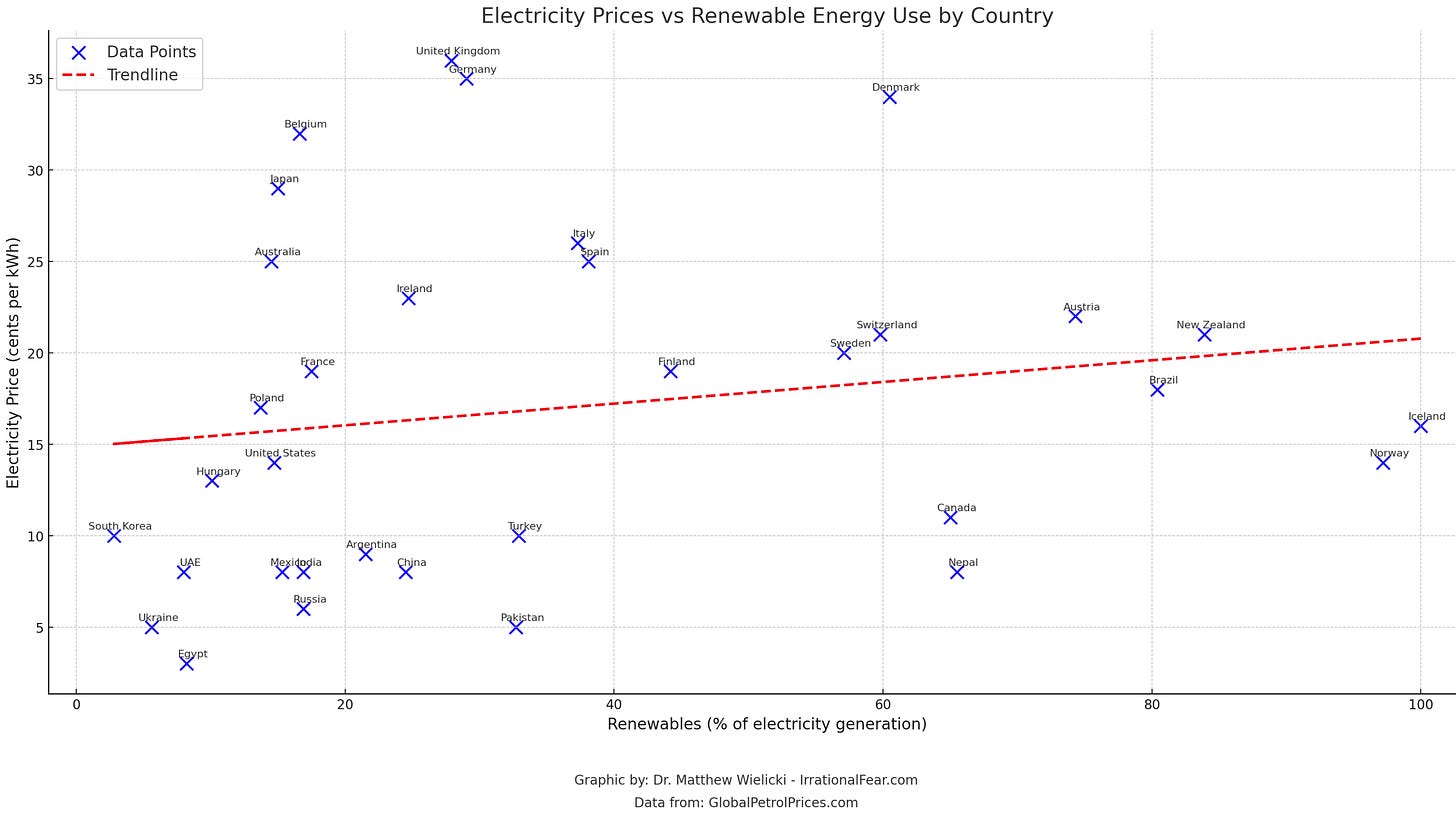The Hidden Cost of “Saving the Planet”
How High Energy Prices Are Costing Us Jobs And Industry
For years, the media and climate activists have told us a simple story: renewable energy is cheaper, cleaner, and essential for saving the planet. We’re told that transitioning to solar, wind, and other renewables is not only good for the environment but also a surefire way to lower electricity bills for families and businesses. The problem? Reality doesn’t match the rhetoric. While it’s true that the cost of generating energy from solar and wind has dropped, the hidden costs related to their intermittency, including backup systems, energy storage, and grid upgrades, are often overlooked in mainstream discussions. The full price tag for renewables is significantly higher than we’ve been led to believe.

The Data Doesn't Lie: Renewable Energy and High Costs
The data repeatedly shows that nations embracing higher shares of renewables tend to suffer from higher electricity prices, directly impacting industries, manufacturing, and jobs. If we continue down this path, blindly chasing “an energy transition,” we risk pricing ourselves out of the global market, hollowing out our industrial base, and ultimately sacrificing the livelihoods of millions, all in the name of ‘saving the world’.
The Global Picture: Renewables and Electricity Costs
Let’s start with what the data tells us. Look at the chart of electricity prices versus renewable adoption. If renewables were the cheaper option, you’d expect the countries with the highest share of renewable energy to have the lowest electricity prices. But the reality is far more complex.
Take Germany for example: With 29% renewables, electricity prices hover around $0.35 per kWh, making it one of the most expensive places globally for energy. Similarly, Denmark, which is even more reliant on renewables with 60.5% renewables, still faces high electricity prices of $0.34 per kWh—significantly higher than many other countries. Despite ambitious renewable policies such as Germany's Energiewende, which aims to transition away from fossil fuels, the high cost of renewable energy sources has led to energy prices that burden both households and businesses.
In contrast, the United States, with only 14.7% renewables, manages to keep electricity prices relatively low at $0.14 per kWh. This disparity raises critical questions about the true cost-effectiveness of renewable energy as a pathway to affordable electricity, especially when compared to countries that have not yet adopted such aggressive policies. Even France, which is heavily reliant on nuclear energy (less than 20% renewables), has electricity prices of around $0.19 per kWh, much lower than Germany's despite a similar economic context.
This shift toward renewable energy has profound implications for manufacturing capacity, particularly in energy-intensive industries like steel production, chemicals, and heavy manufacturing. As energy prices rise, companies face escalating production costs, making them less competitive globally. Germany's industrial output, for example, has been significantly impacted by high energy prices, particularly in energy-intensive sectors. As shown in a 2023 FT report, Germany's energy-intensive industrial production (such as chemicals and steel) has suffered a marked decline since the energy crisis started, contributing to a contraction in its overall industrial output. These high energy costs have led to the offshoring of industrial jobs to countries where electricity is cheaper.
The Energy Landscape in China and India
Looking globally, the situation in China and India offers a stark contrast.
Keep reading with a 7-day free trial
Subscribe to Irrational Fear to keep reading this post and get 7 days of free access to the full post archives.



